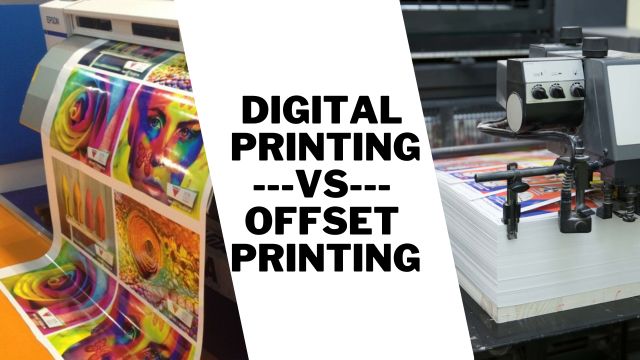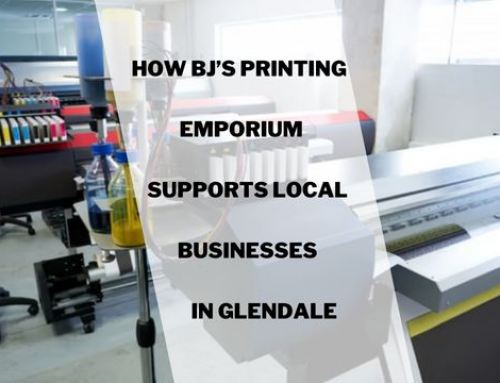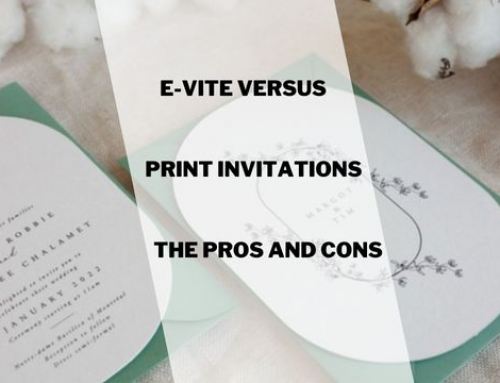In the printing world, choosing the correct printing method can significantly impact your business’s success. Whether you’re a marketing professional, a small business owner, or an individual looking to print important documents, the choice between digital printing and offset printing is crucial. This article aims to demystify these two printing methods’ differences, advantages, and disadvantages, helping you make an informed decision.
Digital Printing vs Offset Printing
From vibrant marketing materials to informative brochures, printing plays a pivotal role in communicating your message effectively. But which printing method should you opt for? Let’s delve into the details of both digital printing and offset printing to determine the better choice for your specific needs.
Digital Printing
Digital printing is a method of printing where digital images or text are directly transferred onto various surfaces using a digital printer. This method utilizes advanced inkjet or laser printers that reproduce your design with stunning accuracy. Unlike traditional methods, digital printing doesn’t require plates, making it a more convenient and cost-effective choice for short print runs.
Advantages
Speed and Efficiency: With no need for plates and setup, digital printing offers quicker turnaround times, making it ideal for projects with tight deadlines.
Customization: Digital printing allows for easy personalization, enabling you to modify each piece of content without additional setup costs.
Cost-Effective for Short Runs: Small print batches are more economical with digital printing, as you won’t have to invest in costly plates.
High-Quality Output: Modern digital printers produce exceptional image quality and color accuracy, rivaling offset printing.
Less Waste: The absence of plates and minimal setup reduces material wastage, making digital printing environmentally friendly.
Disadvantages
Limited Color Range: While digital printing offers impressive color accuracy, the range of available colors may be narrower than offset printing.
Cost Inefficiency for Large Runs: Large quantities may become more expensive with digital printing due to higher ink costs.
Not Suitable for Certain Substrates: Digital printing might not be compatible with all materials, limiting your choices.
Offset Printing
Offset printing, also known as lithography, is a traditional printing technique that involves transferring ink from a plate to a rubber blanket and pressing the ink onto the paper. This method is renowned for its consistent high-quality results and is well-suited for large print runs.
Advantages
Superior Color Reproduction: Offset printing delivers a wide color gamut, making it an excellent choice for projects that demand precise color matching.
Cost-Efficient for Large Quantities: As the quantity increases, the cost per unit decreases, making offset printing budget-friendly for bulk orders.
Versatility in Substrates: Offset printing can be used on a variety of substrates, including specialty papers and textured materials.
Long-Lasting Plates: Once the plates are created, they can be used for a high volume of prints, ensuring consistent quality.
Ideal for Detailed Images: Offset printing excels at reproducing intricate designs and fine details.
Disadvantages
Setup Time and Costs: The creation of plates and initial setup can be time-consuming and costly, making it less suitable for small print runs.
Slower Turnaround: Compared to digital printing, offset printing has a longer turnaround time, which may not be suitable for projects with tight deadlines.
Less Customization: Modifications to the design may incur additional costs, making last-minute changes less feasible.
Frequently Asked Questions (FAQs)
Is digital printing more eco-friendly than offset printing?
Digital printing generally produces less waste and consumes fewer resources, making it a greener choice for the environment.
Which method is more cost-effective for a one-time large printing project?
Offset printing tends to be more cost-effective for large print runs, as the cost per unit decreases with higher quantities.
Can I achieve the same color accuracy with both methods?
While both methods offer impressive color accuracy, offset printing’s wider color gamut can better match specific hues.
Is offset printing suitable for small businesses with limited budgets?
Offset printing’s setup costs and time may pose challenges for small businesses with budget constraints.
Can digital printing reproduce fine details effectively?
Yes, modern digital printers can reproduce intricate details with remarkable precision.
How do I choose between digital printing and offset printing for my project?
Consider factors such as the quantity needed, turnaround time, budget, and desired level of customization when selecting between the two methods.
Conclusion
When it comes to choosing between digital printing and offset printing, it depends on your unique requirements. Digital printing offers speed, customization, and cost-effectiveness for short print runs, while offset printing excels in delivering superior color reproduction and cost-efficiency for large quantities. By understanding the strengths and limitations of each method, you can make an informed decision that aligns with your printing needs.
If you’re looking to make a lasting impression with your printed materials, the decision between digital printing and offset printing is pivotal. Consider the intricacies of your project, weigh the pros and cons, and choose the method that will bring your vision to life most effectively.
Remember, the world of printing is as diverse as the messages you aim to convey. Whether you opt for the modern convenience of digital printing or the classic charm of offset printing, your choice will undoubtedly leave a mark.




Leave A Comment